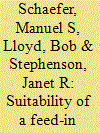| Srl | Item |
| 1 |
ID:
132624


|
|
|
|
|
| Publication |
2014.
|
| Summary/Abstract |
A Quasi-Feed-In-Tariff (QFIT) policy formulation is presented for micro-grids that integrates renewable energy generation considering Policy Makers× and Generation Companies× (GENCOs) objectives assuming a bi-level multi-period formulation that integrates physical characteristics of the power-grid. The upper-level problem corresponds to the PM, whereas the lower-level decisions are made by GENCOs. We consider that some GENCOs are green energy producers, while others are black energy producers. Policy makers incentivize green energy producers to generate energy through the payment of optimal time-varying subsidy price. The policy maker×s main objective is to maximize an overall social welfare that includes factors such as demand surplus, energy cost, renewable energy subsidy price, and environmental standards. The lower-level problem corresponding to the GENCOs is based on maximizing the players× profits. The proposed QFIT policy differs from the FIT policy in the sense that the subsidy price-based contracts offered to green energy producers dynamically change over time, depending on the physical properties of the grid, demand, and energy price fluctuations. The integrated problem solves for time-varying subsidy price and equilibrium energy quantities that optimize the system welfare under different grid and system conditions.
|
|
|
|
|
|
|
|
|
|
|
|
|
|
|
|
| 2 |
ID:
112237


|
|
|
|
|
| Publication |
2012.
|
| Summary/Abstract |
New Zealand (NZ) aims to expand the deployment of wind energy as one means to achieve 90% of electricity generation from renewables by 2025 and in addition to reduce green house gas (GHG) emissions. Due to electricity market regulations that inhibit market entry for independent developers, New Zealand's wind energy development has been limited to primarily large wind farms developed by a handful of electricity utilities. In contrast to many other countries, NZ lacks policy support for entry of smaller investors into the wind generation sector.
In order to gage the acceptability of a feed in tariff (FIT) for wind energy in New Zealand, a survey questionnaire (366 respondents) with land owning farmers and semi structured interviews with wind energy stakeholders was conducted. Although international literature suggests that a FIT would be the most suitable policy support scheme to accelerate wind energy deployment, this conclusion was not reached by many influential stakeholders in NZ. However, a majority of the surveyed farmers supported the introduction of a FIT for wind energy. The study also revealed that farmers' acceptance of wind energy in their local area increases with their awareness about climate change issues.
|
|
|
|
|
|
|
|
|
|
|
|
|
|
|
|